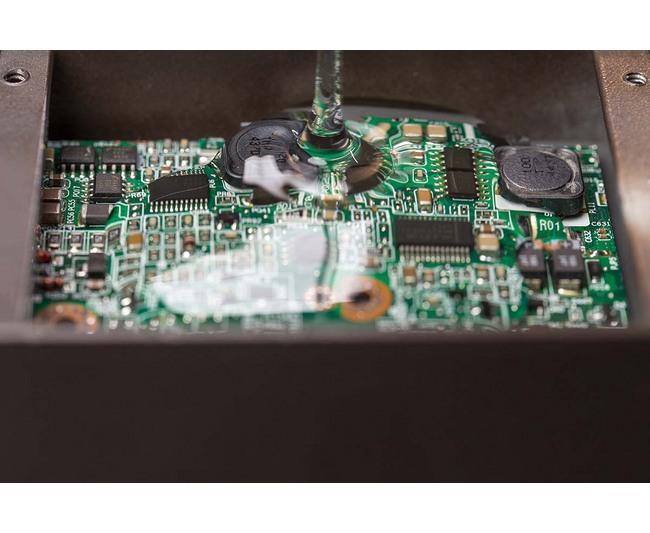It is crucial to use the proper equipment and potting compound for electronic encapsulation in order to precisely meet all the requirements. Epoxies, which are typically used as electrical potting compounds, are essential for providing long-term protection for electronic components. They offer superior mechanical, electrical, thermal, and adhesion properties.
Because each compound offers varying degrees of protection, it is crucial to select the appropriate one depending on the level and type of protection required.
Factors to Keep In Consideration
The kind of protection the component needs typically determines the potting compound to be used for electronic encapsulation. Components may occasionally need additional protection from shock and vibration, while other components may need to be adequately protected against chemicals and moisture. Damage to components may result from inadequate encapsulation.
Understanding the design process is also crucial for lowering the possibility of errors. The resistance of various electrical potting compounds to high temperatures varies. Therefore, in addition to the expected temperature variation, it is crucial to establish the thermal conditions and take into account factors like dwell and ramp times. Some epoxies can endure vacuum encapsulation at temperatures as high as 250 degrees centigrade in brief bursts. Thermal cycling could cause cracks if the proper potting compound is not selected that meets the necessary temperature criteria.
Equipment Types For Encapsulating
Typically, encapsulation equipment with specialized vacuum chambers is designed to the specifications of the customer. The process is intended to guarantee greater levels of integrity and dependability where components can withstand more stress, enhance product quality, and increase production rates.
A selection of desktop and floor standing units make up the encapsulation equipment. Small electronic component potting, and encapsulation are best done on desktop equipment. Applications for this kind of technology include, among others, automotive electronic ignition modules and optical sensors.
Floor-standing equipment, on the other hand, is categorized as having a fixed or variable ratio and allows a high level of versatility. Even in the most demanding assembly line applications, they enable reliable shots. These units have manual, semi-automatic, and automatic operating modes. Television transformers, electronic ignition coils, impedance coils, submersible pumps, and other common applications are just a few names.
Vacuum Encapsulation Is Most Cost-Effective Solution
Vacuum encapsulation is one of the most used processes in the packaging industry. Encapsulation provides a dependable, stable, and cost-effective approach to protect a variety of components, including biomedical microsystems, pressure sensors, optical communication systems, and more.
While the plasma process is used to enhance the surface chemistry of substrates. Packaging used in traditional forms is applied to individual devices at the end of a process and uses expensive ceramic containers. This raises the probability of damage and raises expenses as well. Vacuum impregnation equipment, on the other hand, is uniquely made to dispense exact, metered shots in a controlled vacuum environment that removes all air spaces and results in high-quality products.
The Bottom Line
The process of curing is one of the most crucial elements to consider when choosing electrical potting compounds. Notwithstanding that many products satisfy this need, using a fast cure schedule is not always the best option. Fast cure reactions have the potential to produce more exothermic heat, which could cause the component to become thermally damaged.
